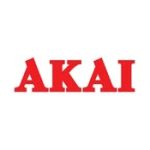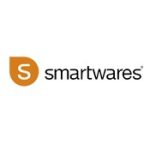Table of contents
The products that are most often accompanied by a quick start guide
For which products would a quick start guide be particularly fitting? In principle, any product could be accompanied by a quick start guide. However, complex products like trains, boats, planes and manufacturing machines do not lend themselves particularly well for a rather straightforward ‘1-2-3’ approach as presented in quick start guides. On the contrary, such products often involve intensive internal training. Products that benefit from the presence of a quick start guide are products that might be relatively complex but should be used by a broad group of users.
Which products are we talking about, then? A nice example would be the so-called media box. At home, this box takes care of all internet connectivity as well as watching tv and using the regular phone. These boxes are in effect connectors between the broadband connection coming into the house and the devices that are part of all the services that telecommunication providers offer to their clients. Such devices are television sets, phones and online devices such as laptops, desktops, smartphones and tablets.
A quick start guide is ideal to point out quickly and conveniently how to connect all these devices to the media box. Also, basic functions such as recording a specific television program, can be incorporated in a quick start guide. The preferred way to communicate here is via visuals, since illustrations provide the most direct and intuitive understanding.
Software applications such as word processors and photo editing programs also lend themselves very well for a ‘QSG’. Since these are complex programs which at the same time offer only a limited number of basic functions (such as doing away with ‘red eyes’ in photographs), a quick start guide can be ideal solution. Such quick start guides give the user enough self confidence to explore more advanced functions (such as making a photo sharper overall).
Printers are primary candidates for a quick start guide as well. With printers, not the basic functions of the product are most important. These can be taken care of in individual software applications or via an easy-to-understand display in/on the printer itself. The installation procedure is far more important. A quick start guide could answers questions like: how do I connect the printer to a computer? How to I replace the ink cartridges?
Two reasons why quick start guides are great
There are at least two reasons why quick start guides are great. The first reason is very obvious: it takes less time reading a quick start guide than a full-blown user manual. After all, the appropriate selection of the relevant information has already been made. The second reason is less obvious. If the installation takes place without any hick-up and/or the first user experiences are nothing but positive, self confidence leads to the motivation to explore the product even further.
The second reason can hardly be overstated. If you how to get rid of red eyes in a photo, it is a relatively small step to make such a photo sharper overall or… soften some of the colors. The same goes for word processors: if you know how to use different fonts, you might want to experiment with various colors of these fonts as well.
Some nice examples of quick start guides
Manualise has three rules of thumb when creating quick start guides:
- A quick start guide in whatever form (A4 sheet, folded card, little booklet etc.) should not be containing more than 1/10 of the information present in the full-blown manual;
- Illustrations should be considered more important than text, since visuals are far more easy to understand;
- Preferably, a quick start guide should stress the installation procedure or the basic functions, but not both at the same time. Would the latter be the case, then the danger exists that a quick start guide somehow resembles the user manual – making it less attractive to start a customer journey with.
A topnotch quick start guide consists of:
- Title, product name
- Relevant images
- Company name
- Its core: working instructions to get started right away
- Remark where to find background information
- CE logo (if applicable)
Making a quick start guide yourself
Of course, you can make a quick start guide yourself. Because a high-quality quick start guide almost by definition is based on illustrations, it is very important to involve a highly skilled illustrator when creating a ‘QSG’.
It is possible to reuse CAD illustrations that are available in the digital database of the manufacturer. However, these CAD drawings have to be adjusted in order to stress the relevant part of the product and/or the action that is needed when using that specific part. These adjustments entail the use of specific software, please see technical illustrations. Without the use of such software, the CAD illustrations will become too detailed and, therefore, too complicated.
In short: it surely is possible to create a quick start guide yourself, but probably the best results present themselves when a highly skilled illustrator uses specific software to filter out the right – i.e., relevant – details.
Let Manualise make a quick start guide for you
We go through the following three stages when creating a quick start guide:
Manualise considers itself to be a QSG specialist. This company is just as keen to create full-blown user manuals as it is keen to create lean-and-mean quick start guides. This is because we recognize the importance of both effective texts and effective illustrations. Manualise most certainly concurs with the view that a picture can say more than a 1,000 words.
For those who are looking for a quick start guide that does the job, Manualise is definitely a name to keep in mind.




